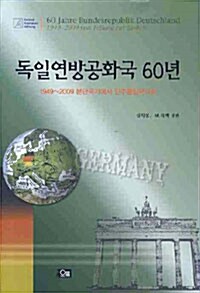
단행본
The continuities of German history: nation, religion, and race across the long nineteenth century
- 발행사항
- Cambridge ; New York : Cambridge University Press, 2008
- 형태사항
- vii, 246 p. ; 23 cm
- ISBN
- 9780521720250
- 청구기호
- 925 S649t
- 서지주기
- Includes bibliographical references and index
- 주제
- Jews, Nationalism
소장정보
| 위치 | 등록번호 | 청구기호 / 출력 | 상태 | 반납예정일 |
|---|---|---|---|---|
이용 가능 (1) | ||||
| 1자료실 | 00012749 | 대출가능 | - | |
이용 가능 (1)
- 등록번호
- 00012749
- 상태/반납예정일
- 대출가능
- -
- 위치/청구기호(출력)
- 1자료실
책 소개
This book opens the debate about German history in the long term ? about how ideas and political forms are traceable across what historians have taken to be the sharp breaks of German history. Smith argues that current historiography has become ever more focused on the twentieth century, and on twentieth-century explanations for the catastrophes at the center of German history. Against conventional wisdom, he considers continuities - nation and nationalism, religion and religious exclusion, racism and violence - that are the center of the German historical experience and that have long histories. Smith explores these deep continuities in novel ways, emphasizing their importance, while arguing that Germany was not on a special path to destruction. The result is a series of innovative reflections on the crystallization of nationalist ideology, on patterns of anti-Semitism, and on how the nineteenth-century vocabulary of race structured the twentieth-century genocidal imagination.
Smith reexamines German continuities and sheds new light on nationalism, anti-Semitism and genocide.
Smith reexamines German continuities and sheds new light on nationalism, anti-Semitism and genocide.
목차
1. The vanishing point of German history; 2. The mirror turn lamp: senses of the nation before nationalism; 3. On catastrophic religious violence and the national belonging: the Thirty Years' War and the massacre of Jews in social memory; 4. From play to act: anti-Semitic violence in German and European history during the long nineteenth century; 5. Eliminationist racism; 6. Afterword: where the Sonderweg debate left us.



